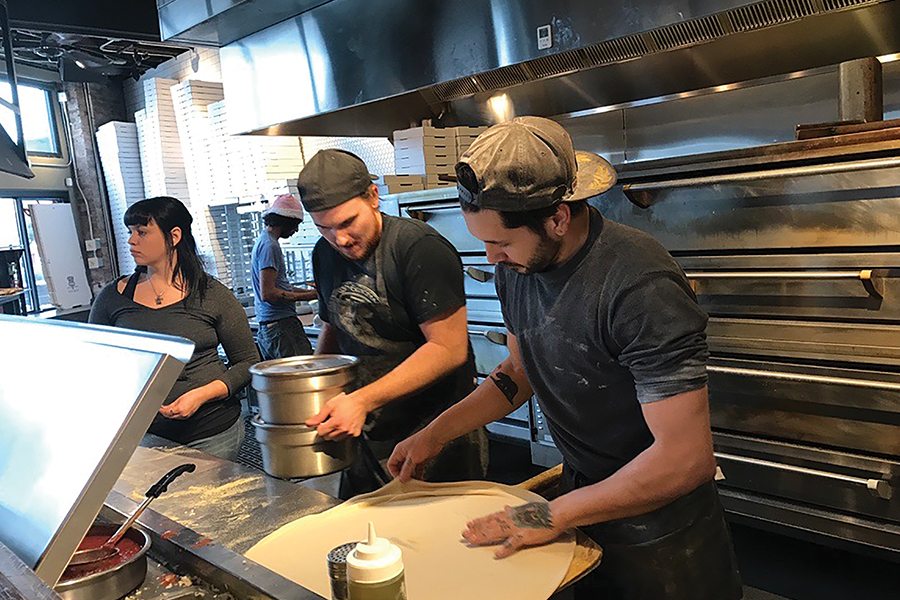Lead By Example — Employee Leadership
It’s imperative to lead by example. The way you act in your restaurant will determine how the rest of your crew performs. When you’re upbeat, fast-paced, enthusiastic and positive, it’s natural for everyone else to feel a reason to do that also. If you’re humdrum, down in the dumps and nonchalant, you’ll find apathy breeds cohorts and others will follow in suit. If you want people to care about your restaurant at a high level, you must care about it even more. An interesting dynamic occurs, though, that is different from leading by example. It’s the inversion effect. In this situation, the opposite of how you act is what occurs. It’s a sneaky thing that can hurt you if you’re not aware of it and how to use it.

Mike Bausch, owner, Andolini’s Pizzeria
If you have ever been told to “Chill out,” what was your reaction? I’m willing to bet the opposite occurred, i.e., no chill. The other person is insensitive to your situation and tells you they don’t care when you say to chill, relax or take it easy. Being easygoing and telling you to be the same is infuriating. These phrases don’t recognize the person’s issue at hand.
The inversion comes into play best with customer interactions. If you want a customer to react calmly, you need to act in a very heightened manner. If a pizza was ruined, maybe even has a foreign object in it; if you come off easy-breezy about the situation, it will drive the customer to go nuclear. The inverse has occurred: the customer is mad when your goal was to keep things even keel. The easygoing response comes off as flippant, condescending and even disrespectful.
You have to rise to the occasion with a heightened level of care to invert their response. When appropriately executed, the customer will react with a feeling of, “well, obviously, they value my opinion about this. Maybe I’m overreacting.” Long wait time, hair in the food, cold, soggy, anything, is your chance to rise to the occasion.
Imagine a super egregious one like a piece of plastic in the pizza. A proper response would have appropriate inflection and tone that shows you care, like: “Oh wow, I am so incredibly embarrassed by this. This has never happened in the past (assuming that to be true), nor can I ever fathom how this happened. I’ll get to work tracking down if this came from the dough ball and will toss all those doughs. I’m going to research this on camera and interview everyone who was making dough today. Thank you for telling us so I can get to work on this and make this right to you.”
The goal of any issue, no matter how big or small, is for the customer to respond assured with, “Oh, okay. I see. That makes sense. You have this under control, and this isn’t the norm. Thank you for hearing me out.” While if you had responded, “Oh, something got into your food? Well, I’m sorry about that. Here’s a free coupon”… you would’ve gotten a much different response. “Free coupon? Why would I ever want to come back here? You obviously don’t take this seriously enough. You guys aren’t professional, and I never want anything to do with you.” Even if they don’t say that out loud, you can bet they thought it and told everyone they knew exactly that.
To invert their reaction, you have to lead with the inverted intent of what you want. Go big to get reasonable; underdo it to get disappointment, anger and resentment. Never be chill if you want chill. Go above and exceed expectations if you want reasonable discourse.
MIKE BAUSCH is the owner of Andolini’s Pizzeria in Tulsa, Oklahoma. Instagram: @mikeybausch







